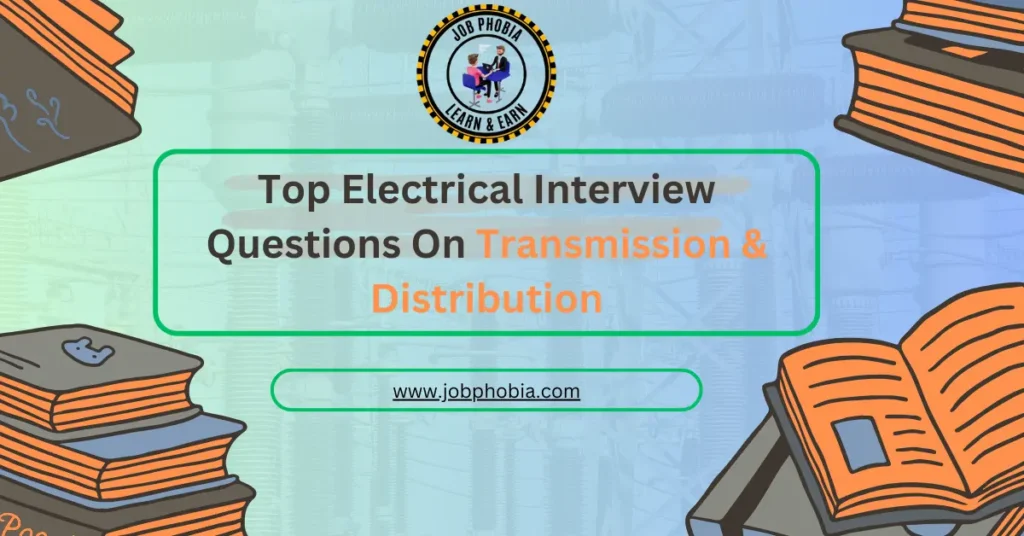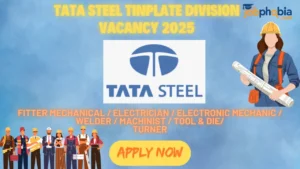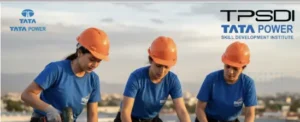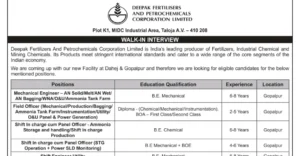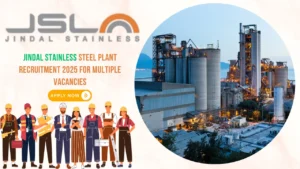Top Electrical Interview Questions On Transmission & Distribution for Steel Plant/Power plant/Cement Plant/Construction
TRANSMISSION AND DISTRIBUTION
1. What are the advantages of hydro electric power plant?
Ans: i. Water is the cheapest and reliable source of generation of electric power.
ii. No fuel transportation problem.
iii. Maintenance problem.
iv. No ash disposal problems and no smoke is produced.
v. Running cost is low.
2. What are the disadvantages of hydro electric power plant?
Ans: i. The power produced by the plant depends upon quantity of water which
in turn is dependent upon the rainfall.
ii. Capital cost of the plant is high.
iii. The hydro electric power plants are generally situated away from the load centers. This requires long transmission lines to deliver power. Therefore the cost of transmission lines and losses will be more.
iv. It takes long time for the erection.
3. What are the disadvantages of Nuclear power plant?
Ans: i. Capital cost is very high.
ii. Erection and commissioning of the plant requires greater technical knowhow.
iii. The by products are generally radio active and may cause a large amount
of radio active pollution.
iv. The fuel is expensive and difficult to recover.
v. Maintenance costs are high.
vi. The disposal of radio active waste is a big problem.
4. What are the advantages of steam power plant?
Ans: i. Fuel is cheaper.
ii. Less space is required compared with hydroelectric plant.
iii. Capital cost is low.
iv. It can be located at any place, located near the load center.
v. Response quickly to change in load.
5. What are the disadvantages of steam power plant?
Ans: i. Maintenance and operating costs are high.
ii. Atmosphere is polluted.
iii. Large quantity of water is required.
iv. Handling of ash is difficult.
v. Time required for erection and put into operation is more.
6. What are the advantages of Nuclear power plant?
Ans: i. The amount of fuel required is very small.
ii. There is no problem of transportation and storage.
iii. Less space is required.
iv. Can be located near the load center.
v. Most economical.
7. Write the main components of tidal power plant?
Ans: i. The power house
ii. The dam to form basin
iii. Sluice- ways from the basins to the sea and from the sea to the basins.
8. What are the classifications of wind energy conversion system?
Ans: i. Horizontal axis wind mill
ii. Vertical axis wind mill
9. What are the advantages of wind energy conversion system?
Ans: i. It is renewable source of energy.
ii. Non polluting
iii. No problem of transportation
iv. It is cheaper if produced in large amount of power.
10. What are the disadvantages of wind energy conversion system?
Ans: i. Wind energy available is fluctuating in nature
ii. Noisy in operation
iii. The overall weight of the plant is very high.
iv. The system is not reliable.
Read More: Top Electrical Interview Questions On Transformer
11. What are the advantages of MHD generator?
Ans: i. Conversion efficiency is around 50%.
ii. Capital cost is less compared with conventional steam plants.
iii. Overall generation cost is less.
iv. Large amount of power is generated.
v. It has no moving parts, so more reliable.
12. Write down the classification of geothermal sources.
Ans: i. Hydro-thermal convective systems.
ii. Geo pressure resources
iii. Petro-thermal or hot dry rocks
iv. Magma resources
v. Volcanoes
13. What are the parts of the transmission system network?
Ans: i. Transmission system
ii. Sub transmission system
iii. Primary distribution system
iv. Secondary distribution system
14. What are the advantages of geothermal energy?
Ans: i. Geothermal energy is versatile in its use.
ii. It is cheaper.
iii. Geothermal power plants have highest annual load factor
iv. Pollution is less.
15. What are the disadvantages of geothermal energy?
Ans: i. Overall efficiency for power production is low; approximately 15%.
ii. Drilling operation is noisy.
iii. Large areas are needed for exploitation of geothermal energy.
16. What are the transmission system voltages used in India?
Ans: 33kV, 66 kV ⇒ For medium high voltage
132 kV, 220 kV ⇒For high voltage
400 kV ⇒For extra high voltage
765 kV ⇒ For Ultra high voltage
17. What are the types of HVDC links?
Ans: i. Monopolar link
ii. Bipolar link
iii. Homopolar link
Read More: Top Electrical Interview Questions On Transformer
18. List the advantages and disadvantages of HVDC transmission system?
Ans: Advantages
i. Asynchronous operation is possible
ii. Less corona loss and radio interference
iii. No compensation problem
iv. Cheaper for long distance transmission
v. No charging current
vi. No technical limit for power transfer except thermal limit
vii. Power control is possible
viii. No reactive power loss
ix. Ground can be used as return conductor
x. No skin and Ferranti effect
xi. No transmission of short circuit power incase of fault
xii. Low short circuit current
xiii. No stability problem
xiv. No switching transient
xv. Require less space compared to ac for same voltage rating and size
xvi. Fast fault clearing time.
Disadvantages
i) Point to point transmission not possible
ii) Introduction of harmonics
iii) Blocking of reactive power
iv) High cost of terminal equipment
19. What are the main components of HVDC transmission system?
Ans: i. Converters
ii. Converter transformers
iii. Smoothing reactors
iv. Reactive power source
v. Harmonic filters
vi. Overhead lines
vii. Earth electrodes
20. What are the applications of HVDC transmission system?
Ans: i. Long distance bulk power transmission
ii. Underground or submarine cables
iii. Asynchronous connection of ac system with different frequencies
iv. Control and stabilize the power system with power flow control
21. Define working voltage, flashover voltage and puncture voltage.
Ans: Working voltage:
It is the voltage at which an insulator is designed to bear the steady state voltage stress.
Flashover voltage:
It is the voltage at which flashover occurs through air surrounding the insulator
Puncture voltage:
It is the voltage at which the insulator breaks through between conductor and pin. It destroys the insulator.
22. What are the characteristics of an ideal insulator?
Ans: i) There should not be any pores or air spaces
ii) There should not be any impurities
iii) There should be perfectly homogeneous material
iv) Leakage current through insulators should be minimum
v) Insulators should be able to withstand over voltage and normal working voltage. It should be mechanically strong to bear
23. Define safety factor.
Ans: A safety factor is defined relating the flashover and working voltages.
Mathematically,
Safety factor = Flashover voltage / Working voltage
24. What are the types of insulators used in overhead transmission lines.
Ans: i. Sackle type (230-440 V lines)
ii. Pin type
iii. Suspension type
iv. Strain type
Read More: Top Electrical Interview Questions On Transformer
25. What are the advantages of suspension type insulators?
Ans: i. Economical for voltage above 33 kV
ii. Each insulator is designed for 11 kV and hence for any operating voltage, a string can be made.
iii. Failure of any unit can be replaced without changing the whole string
iv. Since it is allowed to swing in the air, mechanical stress at a point of attachment is reduced
v. Flexible in extension of voltage rating by adding more units
vi. Since the conductors lay below the cross arm, the line outages due to lightening strokes are reduced.
26. Give various insulating materials used for cable.
Ans: i. Vulcanized rubber
ii. Varnished cambric
iii. Polyvinyl chloride
iv. Impregnated paper
v. Polythene
27. What do you mean by grading of cables?
Ans: Grading means distribution of dielectric material such that the difference between Emax and Emin is reduced. Thereby a cable of same size can be operated
for high voltage or for the same operation voltage, the size can be reduced.
28. Give the reasons of high capacitance in cables than the overhead transmission lines?
Ans: i) High value of permittivity of insulating materials
ii) Distance between the core and the earthed sheath is small
iii) Small distances between the cores (phases) itself
29. What are the grading methods available for a cable?
Ans: i) Capacitance grading(more than one dielectric materials are used)
ii) Inner sheath grading( the same dielectric material is used but potentials at certain radius are held constant by using sheaths)
30. What are the difficulties in practical system grading of cables?
Ans: i) Non availability of varying permittivity of insulating materials
ii) Change in the permittivity with time, which changes the distribution of stress that lead to rapture of insulating material at normal working voltage.
iii) Damage of Inner sheath during laying or due to aging may lead to severe stress
iv) Charging current flows through the Inner sheath which may damage the cable due to overheating
v) There may be resonance problem in Inner sheath grading due to inductance of transformer and capacitance of cable
vi) Grading may not be economical in low voltage cables
Read More:
- Top Electrical Interview Questions On Synchronous & Special Machines
- Top Electrical Interview Questions On Induction Motor
- Top Electrical Interview Questions On Transformer
- Top Electrical Interview Questions On DC Machines

